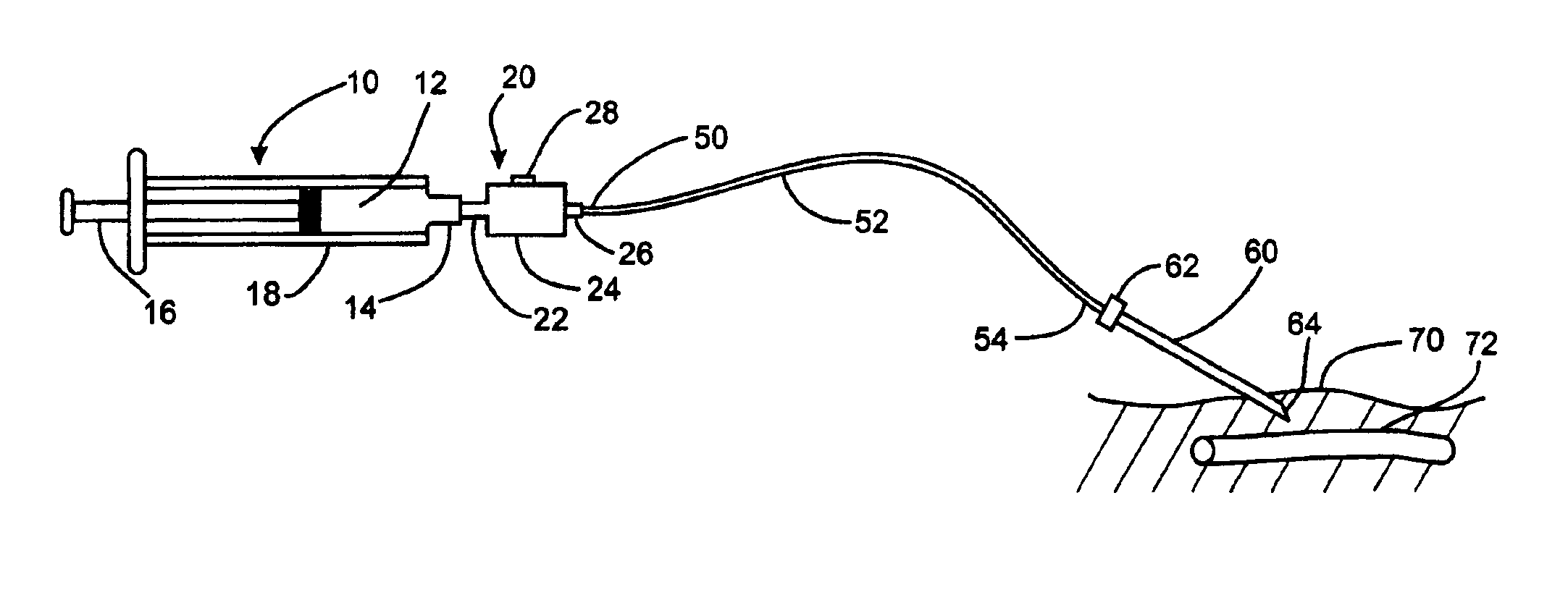Method and apparatus to decrease the risk of intraneuronal injection during administration of nerve block anesthesia
a nerve block anaesthesia and intraneuronal injection technology, applied in the field of regional or local anaesthesia, can solve the problems of traumatic nerve injury, significant nerve injury, needle tip tip injury, etc., and achieve the effects of reducing the possibility of intraneuronal injection, reducing the risk of intraneuronal injection, and limiting excessive injection speed
- Summary
- Abstract
- Description
- Claims
- Application Information
AI Technical Summary
Benefits of technology
Problems solved by technology
Method used
Image
Examples
Embodiment Construction
The present invention provides an objective and reproducible method of monitoring and / or controlling the pressure during nerve blockage injection, especially by less experienced personnel, in order to decrease the possibility of intraneuronal injection. More specifically, the present invention employs a pressure sensing and / or limiting device located between an injection device (typically a syringe) and a nerve block needle whereby injection pressure during a nerve block injection can be easily and objectively monitored, thereby allowing the operator to monitor the injection pressure during a nerve blockage injection procedure.
For purposes of this invention, the terms “local,”“regional,” and “nerve block” with respect to anesthesia are intended to be synonymous and interchangeable. For purposes of this invention, a “normal” injection pressure is generally considered to be in the range of the typical pressure normally encountered in a particular type of nerve bock procedure. An “abno...
PUM
 Login to View More
Login to View More Abstract
Description
Claims
Application Information
 Login to View More
Login to View More - R&D
- Intellectual Property
- Life Sciences
- Materials
- Tech Scout
- Unparalleled Data Quality
- Higher Quality Content
- 60% Fewer Hallucinations
Browse by: Latest US Patents, China's latest patents, Technical Efficacy Thesaurus, Application Domain, Technology Topic, Popular Technical Reports.
© 2025 PatSnap. All rights reserved.Legal|Privacy policy|Modern Slavery Act Transparency Statement|Sitemap|About US| Contact US: help@patsnap.com



